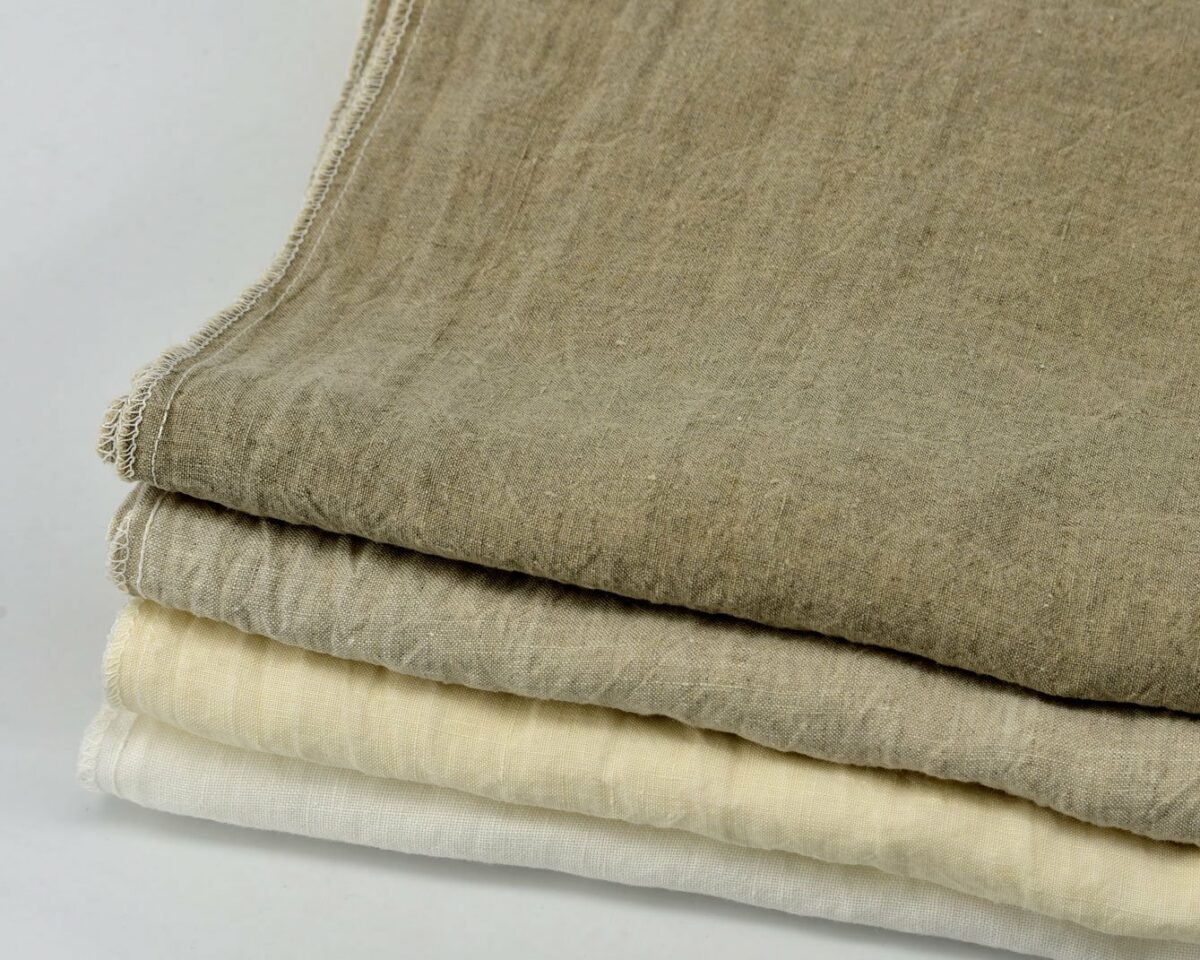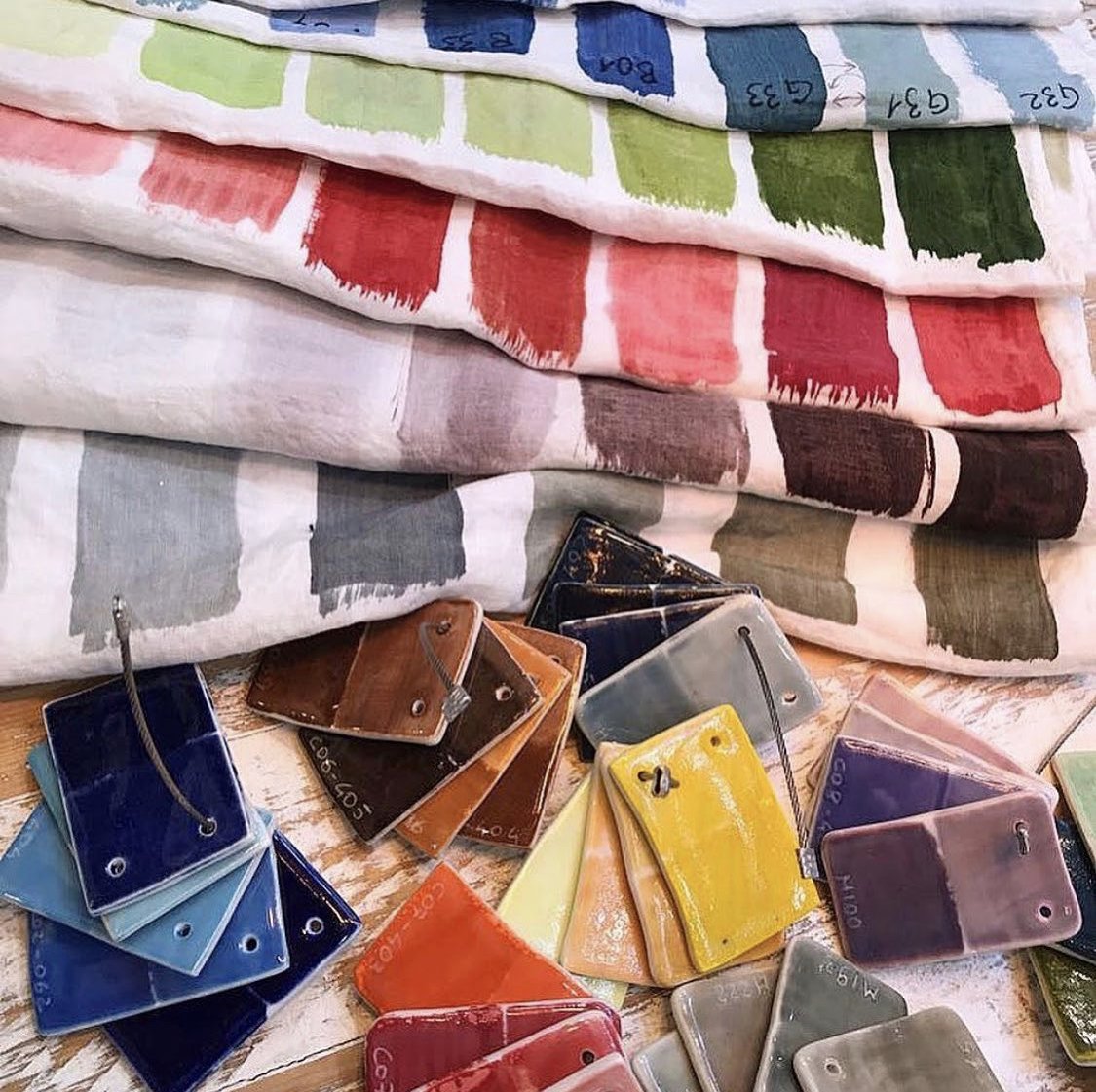News
Woodblock Printing in Italy
Carving a wood block is no easy feat and requires a great deal of patience, time and skill. All block printing begins with a design. The artist will first devise the artwork that they would like to be printed onto the fabric, then, after each block of wood has been planed to leave a smooth, fine surface, the design is carved into the wooden blocks. Larger areas are carved away first, eventually working towards the finer details of the design. Details that are extremely fine can be difficult to carve and may break off during the vigorous printing process, so traditionally they are built onto the carved wooden blocks using strips of copper and brass.
Next comes the all-important printing process. The blocks are painted with the artist’s desired ink and then pressed onto the fabric by applying firm pressure using a printing press, printing barren, walking over the blocks or hammering the inked blocks. Regardless of which printmaking technique is used, the most important part of any block printing process is making sure that each woodblock is pressed onto the fabric evenly by applying an equal amount of pressure across the entire surface. This traditional process has created the bold, eye-catching designs that we immediately associate with block-printed textiles.
Block print methods are a wonderful way to create stunning artistic designs with concise patterns, vivid colours, precise layers and strong stylistic elements. Block printed textiles have an aesthetic that is unobtainable by other means of fabric printing. Each print is distinct which, alongside the tradition and cultural richness of block printing methods, adds to the appeal of these textiles.
The History of Woodblock Printing
Woodblock printing on textiles is one of the oldest and most intricate methods of textile printing. The origin of these printed textiles is so ancient that it is impossible to uncover exactly when the technique was devised. However, it would seem that it has been around for centuries, with a strong history in Europe, Asia and India as well as the ancient civilisations of Egypt, China, Japan and Assyria.
Japanese woodblock prints originating from the Edo and Meiji periods are some of the most famous block printing designs. Rich in references to Japan’s political, social and cultural history, and capturing the beauty of nature, these ancient Japanese woodblock prints showcase the simple elegance and classic charm of woodblock-printed fabrics.
However, the woodblock print designs seen across Europe are not to be underestimated – particularly those from the Italian region of Romagna. Italian artwork is world-renowned for its elegance, unique designs and inspiring motifs, and Italy’s woodblock printmaking skills similarly do not disappoint. The practice of adding adornment to luxury table linens and soft furnishings using woodblock printing is one that has been used in Romagna for many years. The precise origins of this craft are unknown but it is said to once be associated with peasants.
Hand Block Printing in Romagna
The spirit of block-printed textiles still thrives in the area to this day; enhanced by the rich culture and tradition of hand block printing for which Italy is renowned. Although some printing presses have found more effective and comfortable ways to realise their designs, there are still some that stay true to the traditional Italian methods of block printing on fabric; for example, the Stamperia Bertozzi artisans, whom design and produce stunning luxury Italian hand-printed linens exclusively for AllÓRA.
In Romagna, each block is formed from pear wood; not only because it is readily available in Romagna but also because it is a beautiful, soft wood that responds well to being carved. Each block is carved with intricate designs reflecting the beautiful countryside of Romagna, including floral motifs and patterns inspired by nature.
It is not just the elaborate carving of each wooden block that adds such rustic charm and beauty to this traditional craft. Italy’s traditional block printing method involves hammering the block against the chosen fabric and using lighter or heavier strokes depending on the desired finished result. This technique involves a lot of skill, refined over many years, which is why family businesses that have passed the trade down from generation to generation are so uniquely adept at it. This hammering requires a specific rhythm to glean the best results, and combining different wood blocks is almost like creating an intricate puzzle.
It takes years to perfect the complex matrix of wood block designs used by artisans in Romagna, as well as their unique printing mediums. The rusty coloured inks seen in traditional Italian woodblock prints are created by combining vinegar and iron oxide in order to make rust. This is then mixed with iron sulphate and wheat flour to finalise the ink, ready to be printed onto the fabric. Each printer has their own precise, secret recipe.
This method of mixing up each colour and hammering the wood block against the fabric means that each piece is beautifully unique and one-of-a-kind. There are subtle differences between the colours that are impossible to create with machine printing, and knowing that every single piece has very nuanced variations makes this work extraordinarily precious and coveted.
Block Printing on Fabric at Stamperia Bertozzi
Stamperia Bertozzi embraces the art of traditional Italian block printing as well as other methods including hand painting, negative printing and even a mixture of hand painting and hand printing. The Bertozzi family have been using woodblocks fashioned from pear wood to block print fabrics since 1920. As such, their exceptional skills and highly-guarded ink recipes have been passed down through the generations for over a hundred years.
Stamperia Bertozzi block print onto natural fabrics including wool, linen and cotton, as well as more contemporary choices such as leather, porcelain, and cashmere. Combining contemporary styling with the meticulous care and attention of traditional hand block printing means that this family of artisans create the most beautiful and luxurious work.
Mixing their own colours using their own secret recipes results in the most striking block printed colours, with traditional rust and indigo shades that are historically associated with Romagna often making an appearance. Their indigo blue shade is derived from a plant called Isatis Tinctoria and creates a rich blue with many tonal depths. To this day, the surrounding beauty of Romagna still inspires the family-run business at Stamperia Bertozzi, and they take inspiration for their designs from the sea, the colours of the land and the plants that are native to this enchanting area of Italy.
Better still, Stamperia Bertozzi is also highly environmentally conscious, making use of solar power, natural colours and an environmentally sound steaming process to lock the dyes into the fabrics.
Hand Painting a Linen Tablecloth
Block Printing a Linen Table Runner
Given all of this, it’s not hard to see why we choose to stock the incredible work of Stamperia Bertozzi. From luxuriously soft bed and bath linens to tablecloths that will instantly elevate your dining space, here at AllÓRA we allow you to indulge in world-renowned Italian block-printing designs from the comfort of your very own home.
Discover the passion that Stamperia Bertozzi invest into every one of their handmade printed creations.














congratulations on such a great heritage, realising how much work and patience and passion goes into these designs . I just love everyone of the textiles !
Is there a block printing museum in Milan?
Thanks for your enquiry.
The only museum we know is the Zucchi block archive which opens on appointement basis only.
https://www.museimpresa.com/associato/zucchi-collection-museum/
Hello! this is amazing are there any courses to learn how to print?
Thanks for your comment.
At the moment we are working on our own museum of wood blocks.
I will let you know if we will organise printing courses in the future.